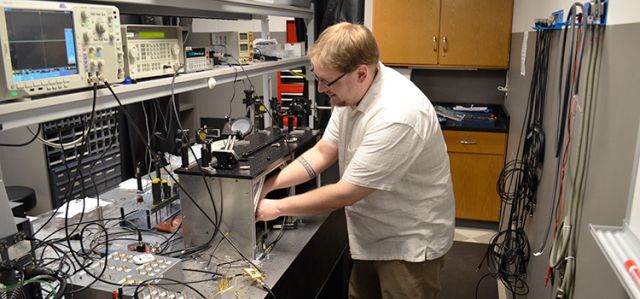Coupling Efficiencies for General Target Illumination Ladar Systems Incorporating Single Mode Optical Fiber Receivers
Document Type
Article
Publication Date
1998
Publication Source
Journal of the Optical Society of America A
Abstract
A rigorous method for modeling received power coupling efficiency (ηF/R) and transmitted power coupling efficiency (ηF/T) in a general-target-illumination ladar system is presented. For our analysis we concentrate on incorporating a single-mode optical fiber into the ladar return signal path. By developing expressions for both ηF/R and ηF/T for a simple, diffuse target, our model allows for varying range, beam size on target, target diameter, and coupling optics. Through numerical analysis ηF/R is shown to increase as the range to target increases and decrease as target diameter increases, and ηF/T is shown to decrease with target range. A baseline signal-to-noise ratio analysis of the system is also provided for varying illumination schemes.
Inclusive pages
736-747
ISBN/ISSN
1084-7529
Copyright
Copyright © 1998, Optical Society of America
Publisher
Optical Society of America
Volume
15
Issue
3
Peer Reviewed
yes
eCommons Citation
Brewer, Christopher D.; Duncan, Bradley D.; Barnard, Kenneth J.; and Watson, Edward A., "Coupling Efficiencies for General Target Illumination Ladar Systems Incorporating Single Mode Optical Fiber Receivers" (1998). Electro-Optics and Photonics Faculty Publications. 14.
https://ecommons.udayton.edu/eop_fac_pub/14
COinS



